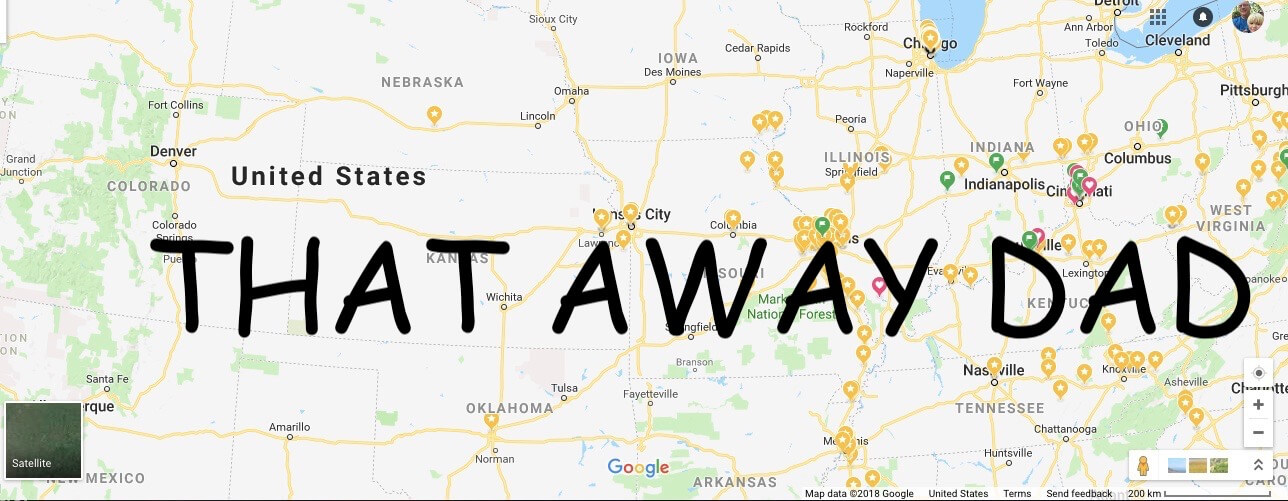
Face the dare to climb a huge white rock mound containing radioactive waste along Highway 94 at the Weldon Spring Interpretive Center.
This site seals radioactive waste and you can climb to the top for a workout and lookout from this World War II relic.
History of the Site
In the 1940s residents of the Missouri towns of Howell, Hamburg, and Toonerville were given 45 days to move. The US government was buying their land for an explosives plant.

During World War Two the Weldon Spring Ordnance Works produced over 750,000,000 pounds of TNT and DNT. After the war, workers burned contaminated buildings.
Then in the 1950s the U.S. Atomic Energy Commission took over the land and started processing uranium. Dumped at a nearby limestone quarry was the radioactive waste. Operations ended in 1966 and were abandoned with toxic pits and blown-up buildings.
In the late 1980s, the Environmental Protection Area declared this area a superfund site and a massive cleanup began. This was due to nearby drinking wells.
Over 1.48 million cubic yards of toxic waste was put in a single holding cell. This stone coffin is supposed to hold for 1,000 years.

My Time Here
I parked next to the Interpretive Center. The center provides information on the history of the place and the building of the disposal unit.

After parking, I headed to the path that leads to the top of the disposal cell.

First, I walked through the Howell Prairie planted with native grasses around the disposal unit.

Then I saw the gravel trail that led to the stairs. This is a vertical 75-foot hike so be prepared to go up. First, you go up metal stairs.

Then you walk up a gravel path to the top.

At the Top
Here I had panoramic views of St. Charles and St. Louis counties. I could see suburban sprawl in the distance and freeways that cross this area. Forested hills were also in the distance.
It is odd to think that below me was radioactive waste at such a peaceful lookout.

Information boards were at the top. A map showed where towns once were, but nothing of it remains.
My hope was that this disposal cell was well constructed with new homes popping up in the distance. A bit eerie to think about. Supposed to hold the waste for a millennium.

Going Down
Next, I headed back down the path and then to the metal stairwell.
I looked out to the right and left of me huge rocks all around. It must have been a lot of work to build this 41-acre disposal cell.

Final Thoughts
It is a fast hike, but it has an interesting history. It is like no other place I’ve been to and a bit ominous with all the dangerous stuff that lies below. I didn’t have time to check out the center the day I was there, but I will come back with the kid to do it.

OTHER TRAILS AT WELDON SPRING INTERPRETIVE CENTER
One Mile Trail
A one-mile gravel road goes around the bottom of the disposal unit. I was not sure how interesting that would be, but I guess if someone wanted to gain a better handle on how massive the unit is then this would be a good way to do that.
Six-Mile Trail
The old “haul road” that used to carry waste materials to the disposal cell site during remediation is now part of the Hamburg Trail. This 6-mile multiuse trail through the Weldon Spring Site links to the historic Katy Trail State Park and a network of trails shown on the map above.
Details:
Interpretive Center Hours: 9 a.m. – 5 p.m., Monday-Friday; 10 a.m. – 4 p.m., Saturday and Sunday
Drive: Take Interstate 64 out of St. Louis then take exit 10. Make a left onto Highway 94 and look for the Weldon Spring Site Interpretive Center on the left. Parking for the disposal unit and trails is on the left side of the building.
Grounds hours: Daylight to Dusk
Address: 7295 MO-94, St Charles, MO 63304
MORE HALLOWEEN HIKES

A Route 66 Ghost Town
Hiking along a former street in a ghost town near the skeletal remains of a Route 66 bridge across the Meramec River was my destination. This area has a lot of history, from once being a resort town to becoming contaminated by the dangerous chemical of dioxin.

Halloween Hikes: Monastery Ruins at Saint Stanislaus
Hiking around stone foundations on the grounds of a former monastery was the highlight of my time at Saint Stanislaus Conservation Area.

Halloween Hikes: Busch Memorial Conservation Area
Like scenes of a post-apocalyptic nightmare or a zombie movie, abandoned cement bunkers are scattered throughout August A. Busch Memorial Conservation Area.

Halloween Hikes: Fort Belle Fontaine
The grounds of a former 19th-century U.S. Military installation and ruins of a popular summer retreat in the 1930s can be explored at Fort Belle Fontaine County Park in North St. Louis County.


